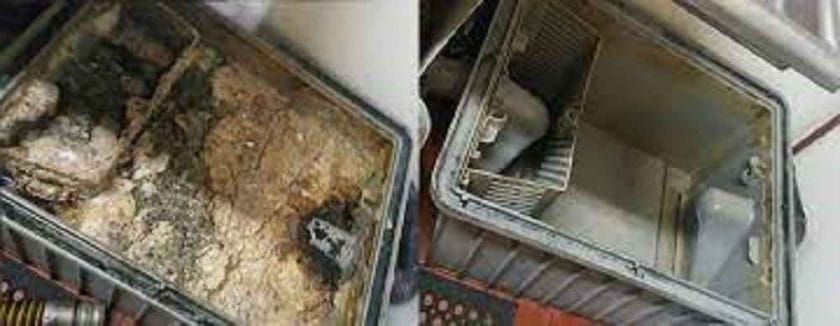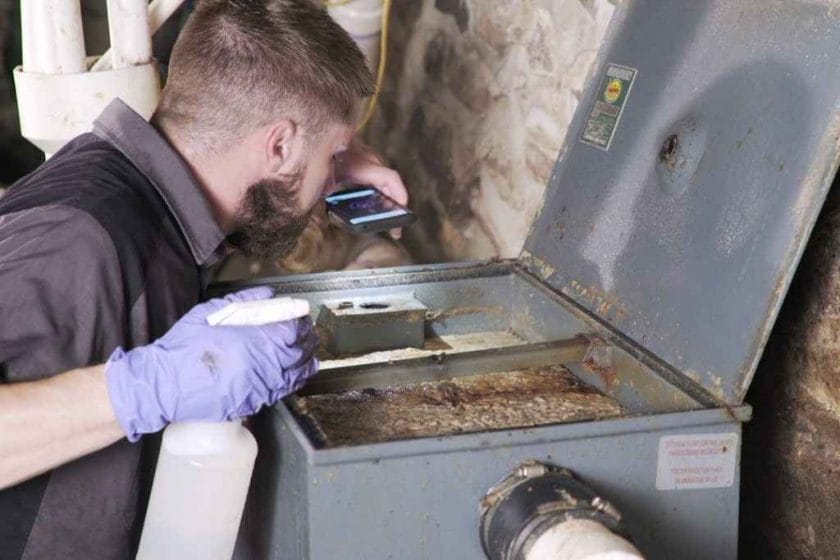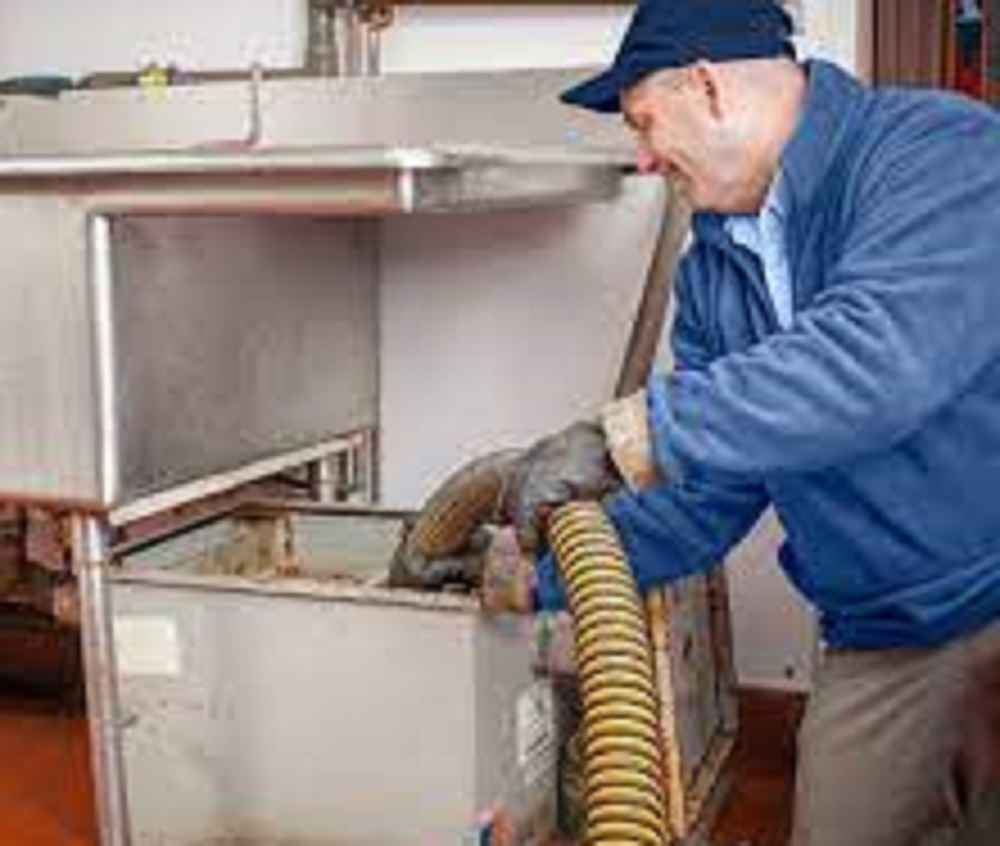A grease trap is an essential component in any restaurant kitchen, designed to separate grease, oil, and fat from the wastewater generated by cooking activities. Grease won’t only wreak havoc on your pipes but also cause a build-up in the sewer system.
However, the grease trap collects the grease and prevents it from entering the drain and sewer systems.Do you want to install a grease trap in your restaurant kitchen but want to know how much it costs? Read on to find out.
The Importance of a Grease Trap in a Restaurant
Having a grease trap in a restaurant is crucial as it helps in maintaining hygiene and prevents blockages in the drainage system. Grease can build up over time and cause blockages in the pipes, leading to backups and even overflows in the kitchen.
A grease trap also helps in reducing the amount of grease and other waste materials that end up in the sewer system, which can cause environmental harm.
Types of Grease Traps for Restaurants
There are two main types of grease traps for restaurants: passive and mechanical. Passive grease traps are simple, cost-effective, and require minimal maintenance, but they are not as efficient as mechanical grease traps.
Mechanical grease traps, on the other hand, are more expensive but provide a higher level of performance, trapping more grease and allowing for easier maintenance.
Passive Grease Traps
Passive grease traps are typically made of concrete or fiberglass and are installed below the sink or dishwasher in the kitchen.
They use gravity to separate grease from the wastewater, with the grease rising to the top and solid waste sinking to the bottom. Passive grease traps require regular cleaning to remove the collected grease and waste materials.
Mechanical Grease Traps
Mechanical grease traps are more advanced and use a combination of gravity, water flow, and mechanical skimming to separate grease from wastewater. These traps are typically larger in size and are installed outside the kitchen. Mechanical grease traps are equipped with a pumping system that removes the collected grease and waste materials, making maintenance easier and more efficient.
Comparison of Passive and Mechanical Grease Traps
While both types of grease traps serve the same purpose, there are several key differences between passive and mechanical grease traps.
Passive grease traps are less expensive, but they are not as efficient in trapping grease and require more maintenance. Mechanical grease traps, on the other hand, are more expensive but provide a higher level of performance and require less maintenance.
When choosing a grease trap for a restaurant, it is essential to consider the size of the restaurant, the type of cooking being performed, and the kitchen’s waste management needs.
A small, family-owned restaurant may only need a passive grease trap, while a large chain restaurant may require a more advanced mechanical grease trap.

Cost of a Grease Trap for a Restaurant
The cost of a grease trap for a restaurant can vary depending on several factors, including the size of the restaurant, the type of grease trap, the location of the restaurant, and the installation method.
Size of the Restaurant
The size of the restaurant is a significant factor in determining the cost of a grease trap.
A small restaurant may only need a passive grease trap, which can cost anywhere from $500 to $1,500, while a larger restaurant may require a mechanical grease trap, which can cost anywhere from $3,000 to $10,000.
Type of Grease Trap
The type of grease trap also affects the cost of a grease trap for a restaurant. Passive grease traps are less expensive, while mechanical grease traps are more expensive.
The cost of a mechanical grease trap also depends on the size and complexity of the trap, with larger, more complex traps costing more.
Location of the Restaurant
The location of the restaurant can also impact the cost of a grease trap. Restaurants in densely populated areas or those located in areas with strict environmental regulations may require more advanced grease traps, which can increase the cost.
Installation Method
The installation method can also affect the cost of a grease trap for a restaurant. Installation by a professional plumber is recommended, and the cost can vary depending on the complexity of the installation and the location of the restaurant.
Maintenance of Grease Traps in Restaurants
Regular maintenance of grease traps is crucial in ensuring their proper functioning and preventing blockages in the drainage system.
The average cost of grease trap maintenance varies, but it typically ranges from $150 to $500 per year, depending on the size and complexity of the trap.
Frequency of grease trap maintenance depends on the size of the restaurant and the amount of cooking performed. Smaller restaurants may only need to clean their grease traps once or twice a year, while larger restaurants may require more frequent cleaning.

Conclusion
In conclusion, a grease trap is an essential component in any restaurant kitchen and helps maintain hygiene and prevent blockages in the drainage system.
The cost of a grease trap for a restaurant can vary depending on several factors, including the size of the restaurant, the type of grease trap, the location of the restaurant, and the installation method.
Regular maintenance of grease traps is crucial in ensuring their proper functioning and preventing blockages in the drainage system.
When choosing a grease trap for a restaurant, it is essential to consider the size of the restaurant, the type of cooking being performed, and the kitchen’s waste management needs.
Restaurants have the option to choose between passive and mechanical grease traps, with each type offering different levels of performance and maintenance requirements.
Frequently Asked Questions about Restaurant Grease Traps
What is the difference between a passive and a mechanical grease trap?
A passive grease trap is a simple, cost-effective type of grease trap that uses gravity to separate grease from wastewater.
A mechanical grease trap, on the other hand, is a more advanced type of grease trap that uses a combination of gravity, water flow, and mechanical skimming to separate grease from wastewater.
How often should a grease trap in a restaurant be cleaned?
The frequency of grease trap maintenance in a restaurant depends on the size of the restaurant and the amount of cooking performed.
Smaller restaurants may only need to clean their grease traps once or twice a year, while larger restaurants may require more frequent cleaning.
What is the average cost of grease trap maintenance for a restaurant?
The average cost of grease trap maintenance for a restaurant varies, but it typically ranges from $150 to $500 per year, depending on the size and complexity of the trap.
Can a grease trap be installed by the restaurant owner, or should it be installed by a professional plumber?
It is recommended that a grease trap be installed by a professional plumber to ensure proper installation and to avoid any potential problems with the local plumbing codes and regulations.
How does the location of a restaurant affect the cost of a grease trap?
The location of a restaurant can impact the cost of a grease trap if the restaurant is located in a densely populated area or an area with strict environmental regulations. These areas may require more advanced grease traps, which can increase the cost.


Thank you for explaining to us that a grease trap is necessary for a restaurant to have since this is what helps maintain hygiene and prevent blockages in the drainage system since grease can build over time and cause clogging. I am thinking of opening a restaurant in Elroy sometime in December, so now I need a grease trap system installed for the kitchen since I finally managed to close the deal for the commercial property I’ll be using for my new business. I’ll take note of this while I call a plumbing company to hire for my restaurant’s grease trap system installation soon.